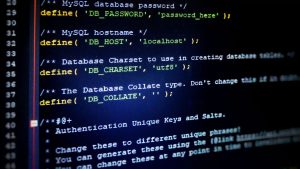Proactive Security Matters for BSD Servers
BSD systems are trusted for their strong security reputation, but even the most hardened servers are not immune to unauthorized access attempts. Learning how to detect and block unauthorized access attempts on BSD is essential for maintaining system integrity in the face of constant probing by cyberattacks. These threats often target misconfigurations or overlooked services, waiting for an opportunity to slip through unnoticed.
Taking proactive steps ensures that potential intrusions are stopped before they escalate into full attacks. Whether hosting sensitive company information or personal projects, safeguarding access is a responsibility that cannot be overlooked.
Strong initial setup and vigilant monitoring form the cornerstone of keeping a BSD system safe and responsive under any circumstances.
Recognizing the Signs of Unauthorized Access
Unauthorized access attempts leave behind traces. They might appear as repeated failed login attempts, unfamiliar user accounts, or sudden spikes in system load. That’s why it’s important to understand how to detect and block unauthorized access attempts on BSD before those signs escalate into full compromises. These early warnings are easy to miss without the right tools or monitoring habits.
System logs are often the first place where suspicious activity surfaces. They can show patterns such as repeated login failures from a single IP or login attempts using commonly guessed usernames.
Understanding these signs and reacting quickly builds a stronger defense line, helping to stop intruders before they can cause real harm.
Using Log Monitoring to Detect Intrusions
Logs offer a detailed view of what happens on a server. By carefully tracking authentication logs, firewall messages, and system errors, administrators can pinpoint when something unusual occurs. Free tools like logwatch or syslog-ng can automate this process.
Setting up email alerts for unusual events makes it easier to stay informed without manually checking logs every hour. For example, a burst of failed SSH login attempts could trigger an immediate warning.
Smart monitoring not only speeds up detection but also helps build an archive of incidents that can be reviewed for patterns over time.
Implementing Firewall Rules with PF or IPFW
Firewall configuration on BSD acts as the first physical barrier against unwanted access. Tools like PF (Packet Filter) and IPFW offer fine control over incoming and outgoing network traffic.
Well-crafted firewall rules can restrict SSH access to known IP ranges, limit exposure of unused ports, and automatically block suspicious IPs after a set number of failed attempts.
Keeping the firewall rules updated and reviewed periodically ensures that new threats are properly managed as they arise.
Leveraging Fail2ban for Automated Blocking
Fail2ban is a trusted tool for protecting BSD systems against brute-force attacks. It works by monitoring log files for failed login attempts and banning the offending IP addresses for a configured amount of time.
With flexible configuration, Fail2ban can protect services like SSH, FTP, and even web servers running on BSD. Its automatic nature removes the burden of constant manual oversight.
Setting reasonable thresholds and ban times balances between stopping attackers and avoiding unnecessary lockouts for legitimate users.
Strengthening SSH Security with Best Practices
Since SSH is a common entry point, reinforcing its setup is a crucial part of defense. Disabling root login, enforcing key-based authentication instead of passwords, and changing the default port are effective strategies.
Additionally, limiting the number of allowed SSH login attempts further minimizes the window attackers have to guess credentials.
Every small improvement makes unauthorized access exponentially harder, discouraging casual attackers from spending time targeting the server.
Keeping the System and Packages Updated
Outdated software often contains vulnerabilities that attackers are ready to exploit. BSD systems, just like any others, need regular updates to patch security flaws.
Tools like freebsd-update and pkg streamline this process, making it easier to apply updates without affecting system stability.
Building a routine around checking for and applying updates reduces the risk window and keeps the server in a strong, resilient state.
Setting Up Audit Trails for Accountability
Establishing audit trails is essential for maintaining transparency and security on BSD systems. Audit trails capture every meaningful user interaction, including login attempts, file access, permission changes, and administrative actions. Tools like BSD’s auditd system provide a structured and secure way to track these activities, offering administrators a detailed record that is invaluable during security investigations.
Keeping audit logs organized and routinely reviewed simplifies forensic analysis if a breach or suspicious activity occurs. Instead of scrambling to piece together what happened after an incident, a well-maintained audit trail provides a clear timeline of events. In addition, audit logs help organizations meet regulatory compliance requirements, especially in industries like healthcare, finance, and government where strict data protection laws apply.
Good audit practices do more than just enhance technical security—they protect administrators and users alike. Clear records of system activity prevent false accusations, demonstrate responsible management, and make it easier to prove compliance during external audits. By prioritizing thorough auditing from the start, BSD administrators create an environment where accountability and trust are built into daily operations.
Training Teams for Security Awareness
Technical defenses like firewalls and intrusion detection systems are critical, but they only go so far if human users remain the weakest link. Investing in security awareness training for all administrators and authorized users significantly strengthens a BSD server’s resilience. Topics such as crafting strong passwords, recognizing phishing attacks, and following secure login practices empower users to act as an active line of defense rather than a vulnerability.
Security training shouldn’t be a one-time event. Regular refreshers ensure that best practices remain top of mind and keep pace with evolving cyber threats. Encouraging team members to report suspicious activity, question unusual requests, and verify identities builds a security-focused culture throughout the organization. A few hours of training can prevent countless hours of damage control after a breach.
An informed and security-aware team responds faster and more effectively when incidents occur. Educated users are more likely to spot warning signs early, correctly follow response protocols, and help minimize disruption and damage. Promoting ongoing education in security awareness is an investment that strengthens every other layer of a BSD defense strategy.
Building a Stronger BSD Defense Strategy
Protecting a BSD server from unauthorized access isn’t about deploying a single tool or relying on a firewall alone—it’s about building a layered and adaptive defense strategy. Combining logs, firewall rules, proactive monitoring, user authentication hardening, and security education creates a resilient ecosystem that can withstand evolving threats. True security is a process, not a one-time configuration.
Paying attention to the small details makes a significant difference. Regularly patching software, reviewing and tightening firewall configurations, rotating passwords, and setting up real-time alerts all contribute to a stronger defense posture. These are all vital components of learning how to detect and block unauthorized access attempts on BSD, helping administrators respond quickly and effectively to potential breaches.
Ultimately, defense comes down to preparation and vigilance. A server that is actively maintained, consistently monitored, and supported by a trained team is far less likely to fall victim to cyberattacks. With a well-thought-out security plan in place, BSD systems can continue to deliver the high levels of trust, performance, and reliability they are renowned for.










No Responses